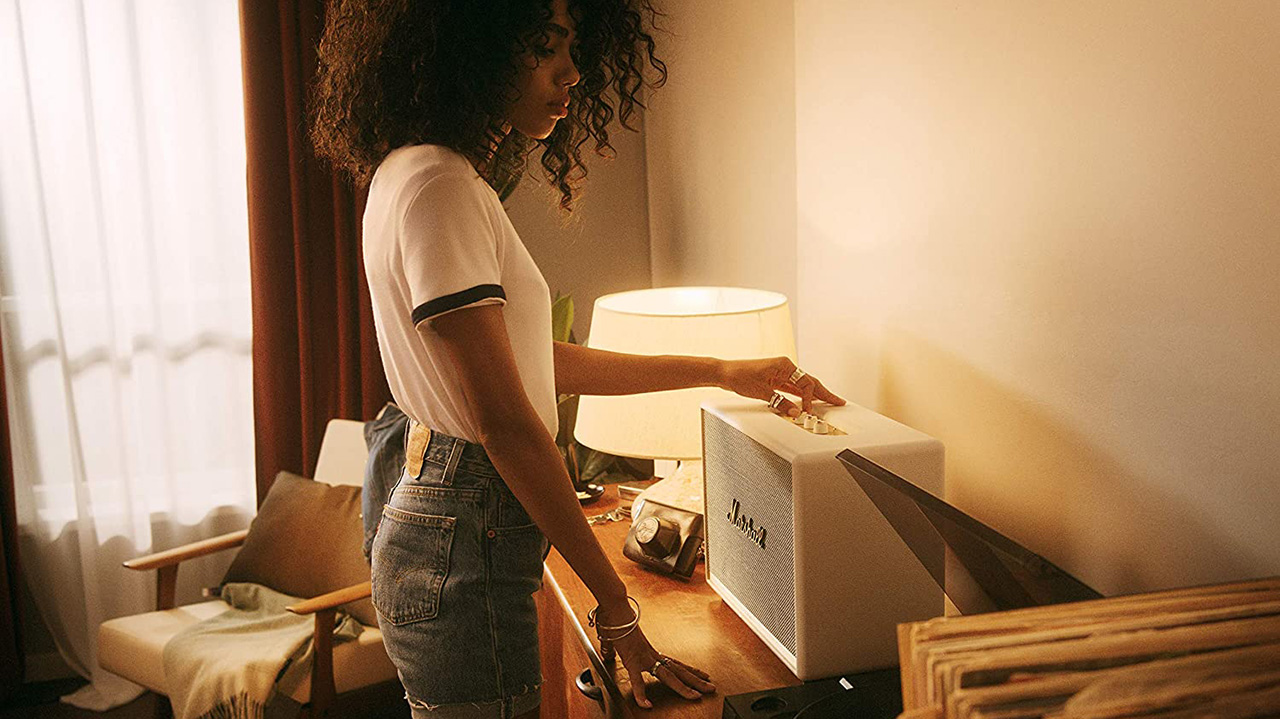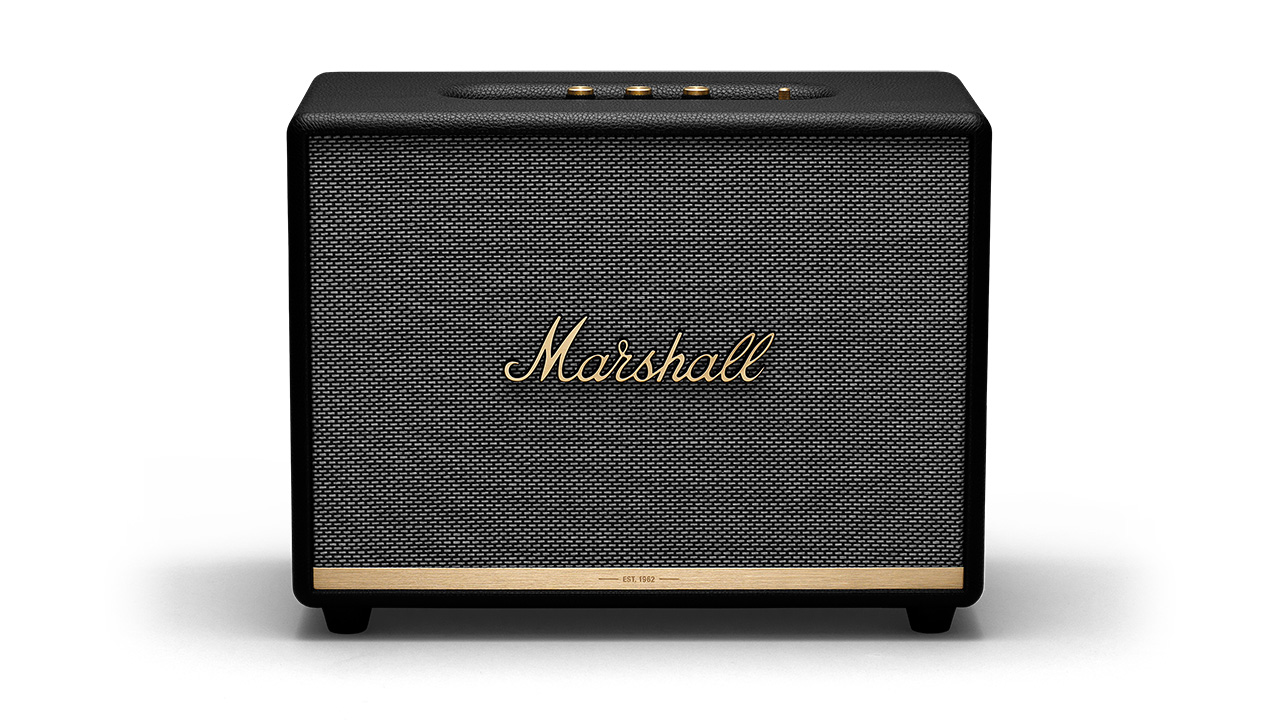If you're the kind of person who hankers after the stage when you're not on it, then Marshall speakers are sure to rock your world. Looking almost identical to the British manufacturer's stage amps, and with robust performance to match, they're the ideal choice for musicians who miss the limelight. Of the nine speakers in the range, the Woburn II Bluetooth ($499.99/£429.99) is the largest.
Launched in 2018 – a year after the original Woburn came out – this sturdy soundbox is the model that looks most like an amplifier – so it'll come as no surprise that it's one of the loudest Bluetooth speakers you can buy today.
Other than being a powerhouse, though, what does this speaker have to offer? In this review, we'll give you the full lowdown on the Woburn II Bluetooth's spec and sound quality – and also explain how it differs from the original Woburn.
Marshall Woburn II review: Design
Measuring 400 x 308 x 200mm (the exact same dimensions as its predecessor), the Woburn II Bluetooth speaker is a beefy bit of kit. As previously mentioned, it looks just like a stage amp – position it on your living room floor and you'll be tempted to place one foot on it and raise your horns skyward, while you peel the carrots.
Despite matching the original Woburn for size, this model is even heavier than that speaker was (8.55kg as opposed to 7.9kg). Indeed, it's one of the heaviest products in our loudest Bluetooth speakers guide. This shouldn't be a problem, though, as the Woburn II Bluetooth speaker isn't designed to be portable – it's powered by mains only, there's no carry strap and it isn't weather-proof.
The Woburn II Bluetooth speaker sports most of the classic details that we've come to expect from Marshall's amps and speakers – namely, a textured vinyl covering (available here in black, white or brown), a brass plate etched with the motif '1962' (the year that Marshall was established), and the name of the brand daubed across the grille in that unmistakable italic font.
As for the control panel at the top of the device, that's much the same as before, with a 3.5mm input socket, plus dials for volume, bass and treble. There are a couple of differences, though: the source button has been moved to the other side of the panel, which makes sense as it means it now sits alongside the indicators telling you which source is currently supplying your music. And the former model's flick switch for the on/off function has been replaced by a more contemporary soft switch. This is disappointing, as the previous offering was much more satisfying and somehow seemed more appropriate for a speaker with such an analogue heritage.
Marshall Woburn II review: Features

As you've probably worked out by now, Marshall don't really do bells and whistles, so if you're looking for a speaker with disco lights or Alexa voice activation, then you're going to be disappointed. What the Woburn II Bluetooth speaker does do, it does very well. Like its predecessor, it houses two one-inch tweeters and a pair of 5.25-inch sub-woofers. This time, though, the latter are powered by two 50W class D amps instead of one. As a result, this 110W box pumps out a brain-busting 110dB of noise, making it the second most deafening product on our loudest speakers list, behind the thunderous SoundBoks (Gen. 3).
There are various ways to play your music on this Marshall speaker. With Bluetooth 5.0 and aptX technology on board, you can pair your smart device (need to upgrade, try our pick of the best phones for music) and enjoy lossless sound without wires at a range of up to 30 feet (ten metres).
The speaker's multi-host functionality means that you can pair two devices at the same time and switch between them if you so wish – handy if you share a house. If you prefer to connect your sources the old-fashioned way, simply hook up to the aforementioned 3.5mm input or the RCA socket round the back. The lack of an optical input this time is sure to disappoint some people, but we've barely used the technology in the past few years, so we're not too fussed.
All the latest speakers in the UK manufacturer's lineup work with the Marshall Bluetooth app, and the Woburn II Bluetooth speaker is no exception. The app enables you to personalise your listening experience by choosing one of the EQ presets, and also adjust the intensity of the LED lights on the control panel (no, we don't really care about that either).
Marshall Woburn II review: Sound
To try out this Bluetooth goliath, we paired our phone and opened up the Spotify app. Selecting Queen's Greatest Hits, we lined up You're My Best Friend and hit play. We've often found that the wooden cabinet construction of Marshall's speakers lends itself to a warm, natural sound, so we weren't surprised to hear those opening Wurlitzer electric piano chords ooze out of the grille like treacle.
What with the Woburn II being such a beast, it also came as no surprise that it handles bottom end with confidence (it helps that the unit contains a bass reflex enclosure with a rear-firing port). This was particularly noticeable on Another One Bites The Dust, the speaker's full-phat performance doing full justice to John Deacon's swaggering refrain.
During Don't Stop Me Now, the Woburn II Bluetooth speaker's versatility really starts to shine, the speaker delivering Freddie Mercury's operatic meandering with cleanliness and verve. Even at high volumes (and this thing gets very loud), the speaker just about manages to hold things together, with only the faintest hint of deterioration. As the song drew to its breathless climax, it was easy to see why Marshall has been the preferred choice of stage musicians for the past six decades.
Marshall Woburn II review: The alternatives
Looking for a powerful speaker that you can play outdoors? They don't come much more powerful than the SoundBoks (Gen 3). Built like a brick khazi, this Danish-built battering ram delivers an incredible 126dB of volume, and offers up to 40 hours of battery life to boot. It isn't cheap, though – expect your bank balance to be £899/$999 lighter.
If you're looking for some boom on a budget, look no further than the Anker Soundcore Rave. This portable party-starter offers an impressive 105dB of volume for just £199/$220; and with 24 hours of battery life, it'll keep you dancing day and night.

